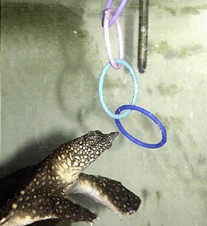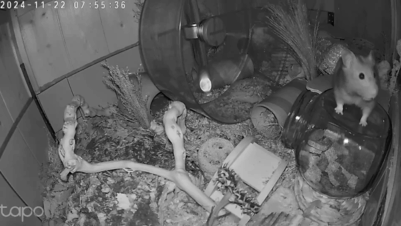Cats are one of the most popular pets around the world. Nevertheless, pet owners do not seek veterinary medical care for more than 50 percent of health issues in cats (BVS, 2021; Royal Canin, 2021). Additionally, veterinary medical care tends to be sought more thoroughly in early life, when vaccination and neutering are performed, with the frequency of vet visits reducing as cats reach adulthood. This significantly affects their health and well-being. In addition to the reduction in healthcare, continuing education opportunities for pet owners are also reduced in correlation with age.
Why do owners stop bringing their cats to the vet?
Pet owners often believe their cats “don’t need medical care”. This misconception has two main reasons:
- Signs of illness and pain in cats are difficult to recognise as they are generally reclusive or stoic animals known for hiding signs of pain and discomfort
- Cats are considered self-sufficient (Quimby et al., 2021)
These features pose a major challenge to veterinary professionals because they need to raise the pet owners’ awareness of the importance of preventative care from an early age. However, raising owners’ awareness of the importance of regular healthcare is not the only barrier as there is also difficulty in physically taking cats to the vet.
A cat’s emotional health and well-being are closely linked to the environment in which they live and the interactions they experience [and] their sense of security is intrinsically linked to the control they have over their territory

A cat’s emotional health and well-being are closely linked to the environment in which they live and the interactions they experience (Taylor et al., 2022). Furthermore, their sense of security is intrinsically linked to the control they have over their territory. Therefore, taking cats away from their home and into an unfamiliar/unknown environment, such as a veterinary practice, where they are exposed to odours and aversive stimuli, is a highly stressful event. In fact, just putting a cat in a carrier is already a big challenge.
This stress significantly affects cats and is also reflected in the stress levels of pet owners (Riemer et al., 2021). Negative and stressful experiences like these discourage future visits to the vet, compromising preventative care and early disease detection. This was seen in responses to the most recent PDSA Animal Wellbeing (PAW) report, where 14 percent of owners stated that their cats did not receive booster vaccines because taking them to the vet is difficult or because the cats get stressed in a veterinary environment (PDSA, 2023).
During vet visits, fear, anxiety and other negative emotions experienced by cats can have significant adverse effects on veterinary professionals as well. This is because cats’ behavioural responses to stress make it difficult to perform tests and can lead to changes in physical examination and laboratory test results, which could cause misdiagnosis and unnecessary treatments. In addition, there may also be a higher risk of injury to cats or humans (Rodan et al., 2022).
How do we change this stress for all involved?
To change this stress-inducing scenario, it is essential not only to educate pet owners about the importance and need of regular veterinary medical care for cats but to improve the general care for feline patients. Building a good reputation as a truly cat-friendly practice shows pet owners that your team understands vet visits from the cat’s point of view. This reassures them that you know how to create a safer and cosier environment for cat and owner.
Based on this need, the International Society of Feline Medicine (ISFM) and the American Association of Feline Practitioners (AAFP) have established the Cat Friendly Clinic and Cat Friendly Practice programmes to certify UK and US veterinary practices as cat-friendly, respectively (AAFP, 2022; CFC, 2023). These programmes are global initiatives designed to elevate care for cats and reduce in-practice stress for cats, pet owners and veterinary teams alike through high standards of care, continuing education and evidence-based medicine.
Becoming a ‘cat-friendly clinic’ depends primarily on understanding cats both as a species and as individuals, including their emotional and behavioural responses and the best way to interact and deal with them
Becoming a “cat-friendly clinic” depends primarily on understanding cats both as a species and as individuals, including their emotional and behavioural responses and the best way to interact and deal with them (Rodan et al., 2022). Establishing cat-friendly principles with proper care for this species encourages pet owners to seek veterinary advice, provides smoother and safer visits and strengthens the trust between the patients and their owners.
What does cat-friendly actually mean?
Being cat-friendly involves two fundamental approaches:
- Modifying the physical space of the clinic to receive and comfortably accommodate the cat
- Adapting the way the veterinary team interacts with the feline patient
By adopting these practices, veterinary clinics provide a more pleasant and beneficial experience for cats, creating an environment favourable to the animals’ general well-being and the owners’ satisfaction.
These approaches provide numerous benefits, including improving healthcare for cats; reducing anxiety and stress in patients, pet owners and veterinary staff; establishing more productive and positive visits; and minimising risks of injury to the client, patient and team (Brown et al., 2021). In addition, we are seeing an increase in veterinary care for cats recently. According to the AAFP and ISFM, Cat Friendly Practices and Cat Friendly Clinics serve a higher percentage of feline patients and have a 30 percent higher frequency of feline patient visits compared to non-cat-friendly practices/clinics (Mercader, 2019). Research also shows these practices have more accurate examination findings (Rodan et al., 2022).
Creating a cat-friendly veterinary environment
After travelling to the clinic, the physical environment plays a crucial role in a cat’s experience at a veterinary clinic. There are several ways to improve this environment and make it cosier to cats to minimise negative feelings, such as fear and anxiety, while encouraging positive and comforting behaviours.
To achieve this goal, you should adjust the facilities, taking into account the species-specific senses, peculiarities and behaviours of cats. Designing and adapting areas of the veterinary clinic, such as waiting rooms, exam rooms and hospitalisation wards, is critical to reducing stress and promoting positive feelings in cats. This also involves minimising the presence of other cats and species in the waiting rooms and hospitalisation spaces – perhaps through creating feline-only spaces (which can, in turn, reduce the stress of prey animals, such as rabbits and guinea pigs, etc).
Changes do not have to be structural or costly to be effective. Several measures, such as the management of odours and chemical signals [and the] reduction of sound and visual stimuli, already show significant results
Changes do not have to be structural or costly to be effective. Several measures, such as the management of odours and chemical signals, as well as the reduction of sound and visual stimuli, already show significant results (Taylor et al., 2022).
Pet owners can also prepare themselves in advance for upcoming visits to the clinic by following specific guidelines. These guidelines will, in turn, contribute to the well-being of cats throughout their experience before, during and after a visit to the clinic. Such an approach not only makes care more effective, more positive and easier for all parties involved, but promotes a smoother clinical environment.
Ensuring cat-friendly veterinary interactions

Approaches centred around feline well-being consider the cat’s emotional and cognitive health throughout the veterinary clinic journey, including the time before the patient leaves home. Visits to the veterinary clinic should be a positive experience from the beginning, as evidence indicates that the first visits can affect subsequent responses and have long-term effects on animals (Rodan et al., 2022). In addition, this approach acknowledges each animal as an individual with its own needs and idiosyncrasies.
Veterinary evidence supports the suggestion that interactions without physical restraints are more effective and productive (Moody et al., 2018). In addition to direct physical interactions with the patient, it is important to mitigate the impact of non-physical (ie visual, auditory and olfactory) interactions.
To be cat-friendly, it is essential to have the ability to understand, interpret and respond accordingly to cats’ emotional states, thus allowing them a sense of control.
Final considerations
Cat-friendly practices have evolved as our understanding of optimal care for these patients has increased and continues to do so. Regardless of whether a clinic is for felines only or not, introducing cat-friendly practices to your cat care routine may seem complex, but there is often no need to make many adjustments to the physical space. The main adjustments consist of implementing cat-friendly principles in the care routine of veterinary practitioners and the rest of the veterinary team.
Having cat-friendly care protocols makes the environment smoother, engages the team and is an opportunity to increase the number of feline visits.
| · ISFM website · AAFP website · Cat Friendly Practice recognition programme · Cat Friendly Clinic programme · Cat-friendly interaction guidelines: AAFP/ISFM and CatVets · ISFM/AAFP cat-friendly veterinary environment guidelines |







